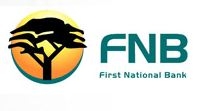Mixed economic signals as markets retreat2011-02-14 By Cees Bruggemans, Chief Economist FNB Cees@fnb.co.za 14 February 2011 The economy is strongly in recovery when going by new passenger car sales (January +22%) and mining output (December +12%). Also, the Kagiso Purchasing Managers Index gave hope by jumping to 54.6 in January, suggesting promising manufacturing prospects. Car demand is driven by strong pent-up demand as the replacement cycle keeps reversing itself. Mining output has now regained levels last seen in 2005-2007. Total value of mineral sales is touching 2008 peak levels, assisted by high export commodity prices. Among the top five counters (yielding over 80% of our mining output) diamonds outshone all in December with +50%, platinum group metals did +11%, coal did +9%, gold could only do +3%, while iron ore lapsed -5%. Some very serious profit recoveries were reported by resource companies, with more sterling results expected this week as the comeback really gets underway. --------------------- In contrast, manufacturing production for December was up only a tepid 0.2%. After a strong 2009 inventory rebound faltered in 1H2010 as momentum was lost, output was badly knocked by strike action in 3Q2010 and failing to decisively recover in 4Q2010. Its sad tale is in the detail. Motor vehicle output was still +14%, basic chemicals likewise doing +12%, food +6%, wood, paper, printing +9%. But basic iron and steel was -18%, oil refining -20%, textiles, clothing, footwear -8%, furniture -15%. Those are too many and too large negatives, keeping the overall manufacturing recovery back. Meanwhile the building industry and construction space continued to send out weak signals as activity has fallen off severely during 2009-2010. So far there has not been much of an indication that a turn in fortunes is imminent, even though residential building plans passed have been positive for nearly a year now, transfer duties collected recovering (if from depressed levels) and the need for infrastructure maintenance, replacement and expansion overwhelming. Even though household consumption is recovering, and expected to support retail, wholesale, transport and communication activity, the overall impression remains of a modest economic revival overall. The Quarterly Labour Force Survey for 4Q2010 suggested the economic recovery is well advanced, adding 120 000 formal jobs in the quarter after reaching a cyclical low of 9 million jobs in mid-2010. Most of the recent job gains were in the public sector as large parts of the private sector kept reducing labour. ----------------------- Meanwhile, our financial markets kept repositioning and in some instances heavily retreating. These past six weeks the Rand has lost over 10%, from a best 6.58:$ to 7.28:$. Against the Euro the Rand's losses were even more pronounced, nearly regaining 10:€. SARB added aggressively to the foreign reserves (at a pace that is probably not maintainable), doing so at a time that global markets were going through a rethink. Fixed income bond space was being vacated, as better growth prospects in the US (and higher risk premiums in Europe) caused very high bond prices to come off and yields to rise. This extended to emerging market space, as higher inflation concerns combined with reduced growth advantage as developed economies recover, causing bond yields to rise, equities to fall back and currencies to struggle as portfolio capital inflows became less generous or reversed outright as the world made a mild course correction and markets repositioned. Our long bond yields have now retreated by nearly 1% (higher), equities broke off an assault on the 33 500 JSE All Share record of mid-2008, and the Rand pulled back (providing yet more incentive to foreign portfolio investors to lighten their exposure). These financial market movements reflect changing relative fortunes when contrasting emerging with developed market space, but do probably not constitute a rejection of the fundamental growth story still favouring emerging markets and commodity producers. There is higher inflation in the world today, as especially emerging countries close their output gaps and suffer commodity price surges (in many instances driven by natural disasters). Policy in many instances has been judged slow in attending to such inflation concerns, preferring to linger as growth takes precedence (and fearing renewed currency firming if interest rates are raised). Markets have responded by changing relative prices, putting a different valuation on relative growth and inflation prospects and likely timing of future policy actions. Within the greater context, this still feels as only a minor course correction rather than a major change of direction. Still, the ECB was early among the majors suggesting early policy tightening, and now even the Fed seems to have started changing its body language (first tightening within twelve months?). South African GDP will probably only mildly advance this year by 3.0%-3.5% after 2.8% last year, with inflation more noticeably reaching at least 5% (if not higher) after 3.5% last year (as per December). At some point this will trigger the first 0.5% rate hike by SARB, the market expecting this by September, with a second one following by early 2012. This is unlikely to terminate our cyclical advance, but it will likely temper any incipient boisterousness. Cees Bruggemans Chief Economist FNB Cees@fnb.co.za |
Mixed economic signals as markets retreat
Copyright © 2024 KwaZulu-Natal Top Business
